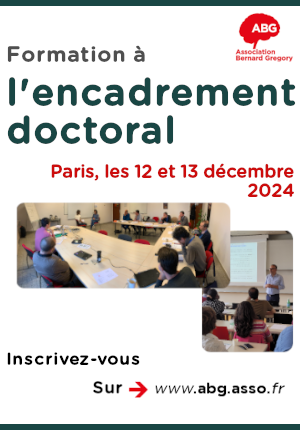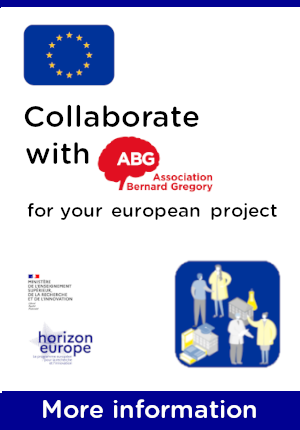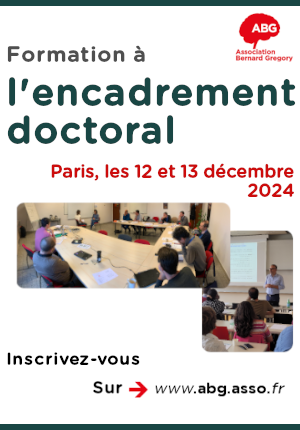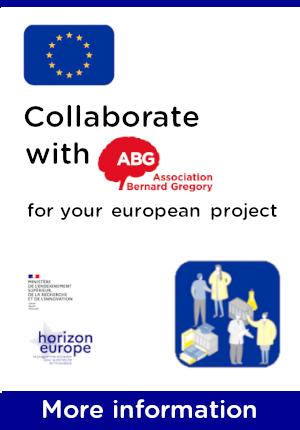Mechanisms involving neutrophils in Venous Thrombosis / Etude des mécanismes impliquant les neutrophiles dans la thrombose veineuse
| ABG-125548 | Thesis topic | |
| 2024-08-28 | Partial or full private funding (CIFRE agreement, foundation, association) |
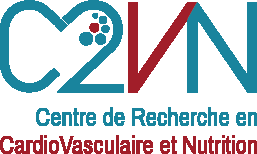
- Biology
Topic description
Venous thrombosis (VT) is the third leading cause of cardiovascular death in industrialized countries. It is a thrombo-inflammatory disease that includes deep vein thrombosis (DVT) and pulmonary embolism (PE). It is a severe disorder that kills many, with a reported mortality rate in France of 7.2 per 100,000. However, estimates from international autopsy series suggest that 0,8 to 1% of hospitalized patients are affected by PE, the most feared complication of VT. In addition, 25-50% of survivors remain with debilitating problems such as post-thrombotic syndrome or pulmonary arterial hypertension in 4% of patients with PE, which severely hampers mobility and quality of life. The recent outbreak of COVID-19 has worsened these numbers.
The processes of platelet recruitment to sites of vascular injury and neutrophil recruitment to inflamed tissues are closely intertwined in the pathophysiology of VT. A central player in this process is von Willebrand Factor (VWF), a crucial link between hemostasis and inflammation. VWF facilitates the recruitment of both platelets and neutrophils to the inflamed vascular wall. Specifically, VWF recruits platelets via GPIbα at higher shear rates, while it recruits neutrophils at lower shear rates through interactions with the Slc44a2 receptor (Flesh 2013; Curtis 2010; Bayat 2015). Given the significant morbidity and mortality associated with thrombo-inflammatory conditions, elucidating the mechanisms involving the Slc44a2 receptor is not only of academic interest but also of considerable clinical relevance.
To advance our understanding of VT and pave the way for novel therapeutic strategies, it is essential to investigate the role of SLC44A2 in thromboinflammatory processes. Our research will employ fundamental biological techniques, with a particular focus on 3D-printed flow chambers that mimic venous structures, including valves, combined with fluorescence microscopy. Additionally, we may use inflammation and thrombosis models in Cre-Lox and knockout (KO) transgenic mice as needed.
References
-Bayat B, Tjahjono Y, Berghöfer H, Werth S, Deckmyn H, De Meyer SF, Sachs UJ, Santoso S. Choline Transporter-Like Protein-2: New von Willebrand Factor-Binding Partner Involved in Antibody-Mediated Neutrophil Activation and Transfusion-Related Acute Lung Injury.
Arterioscler Thromb Vasc Biol. 2015 Jul;35(7):1616-22.
-Brill A, Fuchs TA, Chauhan AK, Yang JJ, De Meyer SF, Köllnberger M, Wakefield TW, Lämmle B, Massberg S, Wagner DD. von Willebrand factor-mediated platelet adhesion is critical for deep vein thrombosis in mouse models.
Blood, 2011, 117:1400–1407.
- Brill A, Fuchs TA, Savchenko AS, Thomas GM, Martinod K, De Meyer SF, Bhandari AA and Wagner DD. Neutrophil extracellular traps promote deep vein thrombosis in mice.
J Thromb Haemost, 2012, 10(1): 136-44.
-Curtis BR, Cox NJ, Sullivan MJ, Konkashbaev A, Bowens K, Hansen K and Aster RH. The neutrophil alloantigen HNA-3a (5b) is located on choline transporter-like protein 2 and appears to be encoded by an R>Q154 amino acid substitution.
Blood, 2010, 115:2073–2076.
-Darbousset R, Thomas GM, Mezouar S, Frère C, Bonier R, Mackman N, Renné T, Dignat-George F, Dubois C and Panicot-Dubois L. Tissue factor-positive neutrophils bind to injured endothelial wall and initiate thrombus formation.
Blood, 2012, 120:2133–2143.
-Flesch BK, Wesche J, Berthold T, Goldmann T, Hundt M, Greinacher A, Bux J. Expression of the CTL2 transcript variants in human peripheral blood cells and human tissues.
Transfusion, 2013, 53:3217–3223.
- Germain M, Chasman DI, de Haan H, Tang W, Lindström S, Weng LC, de Andrade M, de Visser MC, Wiggins KL, Suchon P, Saut N, Smadja DM, Le Gal G, van Hylckama Vlieg A, Di Narzo A, Hao K, Nelson CP, Rocanin-Arjo A, Folkersen L, Monajemi R, Rose LM, Brody JA, Slagboom E, Aïssi D, Gagnon F, Deleuze JF, Deloukas P, Tzourio C, Dartigues JF, Berr C, Taylor KD, Civelek M, Eriksson P; Cardiogenics Consortium; Psaty BM, Houwing-Duitermaat J, Goodall AH, Cambien F, Kraft P, Amouyel P, Samani NJ, Basu S, Ridker PM, Rosendaal FR, Kabrhel C, Folsom AR, Heit J, Reitsma PH, Trégouët DA, Smith NL, Morange PE.
Am J Hum Genet. 2015 Apr 2;96(4):532-42.
- Tilburg J, Coenen DM, Zirka G, Dolleman S, van Oeveren-Rietdijk AM, Karel MFA, de Boer HC, Cosemans JMEM, Versteeg HH, Morange PE, van Vlijmen BJM, Maracle CX and Thomas GM. SLC44A2 deficient mice have a reduced response in stenosis but not in hypercoagulability driven venous thrombosis.
J Thromb Haemost, 2020, 18(7):1714-1727.
-Thomas GM, Carbo C, Curtis BR, et al (2012) Extracellular DNA traps are associated with the pathogenesis of TRALI in humans and mice.
Blood, 2012, 119:6335–6343.
- Zirka G, Robert P, Tilburg J, Tishkova V, Maracle CX, Legendre P, van Vlijmen BJM, Alessi MC, Lenting PJ, Morange PE and Thomas GM. Impaired adhesion of neutrophils expressing Slc44a2/HNA-3b to VWF protects against NETosis under venous shear rates.
Blood, 2021, 137(16):2256-2266.
Starting date
Funding category
Funding further details
Presentation of host institution and host laboratory
L’étudiant sera intégré dans une équipe spécialisée dans l’identification et la caractérisation fonctionnelle de nouveaux marqueurs associés à la thrombose (Grace Thomas, Pierre Morange, équipe 2). L’équipe fait partie du Centre de Recherche en CardioVasculaire et Nutrition (C2VN), INSERM 1263 situé à la faculté de Médecine de la Timone à Marseille dirigé par MC Alessi.
Site web:
https://c2vn.univ-amu.fr
Website :
PhD title
Country where you obtained your PhD
Institution awarding doctoral degree
Graduate school
Candidate's profile
Le candidat devra être titulaire d’un Master 2 en sciences biologiques avec une forte dominante en biologie vasculaire. Il devra porter un intérêt pour la réalisation d’études réalisées en flux sous microscope et être prêt à utiliser différentes techniques : biologie cellulaire (culture cellulaire, isolation de cellules sanguines, marquage de cellules, mesure de l’activation cellulaire, tests d’adhésion cellulaire, dosages d’activité, immuno-marquages sur tissus ou cellules), biochimie (western-blot)...
Le candidat devra avoir un attrait pour la mise en place de nouveaux protocoles expérimentaux et être confortable avec l'utilisation de l'informatique et de la microscopie.
Au niveau personnel, le candidat devra faire preuve de motivation, de curiosité, d’autonomie scientifique, de rigueur, d’esprit d’initiative et avoir de bonnes capacités de communication et de travail en groupe.
Le projet est actuellement financé par la Fondation pour la Recherche Médicale avec un financement dédié pour le salaire de l'étudiant en thèse.
The project is actually supported by a grant from "Fondation pour la Recherche Médicale" including a fellowship for the PhD student.
Vous avez déjà un compte ?
Nouvel utilisateur ?
Get ABG’s monthly newsletters including news, job offers, grants & fellowships and a selection of relevant events…
Discover our members
 PhDOOC
PhDOOC  Tecknowmetrix
Tecknowmetrix  MabDesign
MabDesign  Laboratoire National de Métrologie et d'Essais - LNE
Laboratoire National de Métrologie et d'Essais - LNE  ONERA - The French Aerospace Lab
ONERA - The French Aerospace Lab  SUEZ
SUEZ  MabDesign
MabDesign  ADEME
ADEME  Aérocentre, Pôle d'excellence régional
Aérocentre, Pôle d'excellence régional 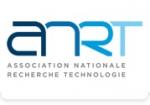 ANRT
ANRT 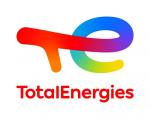 TotalEnergies
TotalEnergies  Groupe AFNOR - Association française de normalisation
Groupe AFNOR - Association française de normalisation  CESI
CESI  Généthon
Généthon  CASDEN
CASDEN  Ifremer
Ifremer  Institut de Radioprotection et de Sureté Nucléaire - IRSN - Siège
Institut de Radioprotection et de Sureté Nucléaire - IRSN - Siège  Nokia Bell Labs France
Nokia Bell Labs France  Institut Sup'biotech de Paris
Institut Sup'biotech de Paris
-
Thesis topicRef. ABG125548Centre de Recherche en CardioVasculaire et Nutrition (C2VN) - INSERM 1263 - INRAE 1260 - Aix-Marseille universitéMarseille - Provence-Alpes-Côte d'Azur - France

Mechanisms involving neutrophils in Venous Thrombosis / Etude des mécanismes impliquant les neutrophiles dans la thrombose veineuse
Biology -
JobPermanentRef. ABG125568Cours GalienBordeaux Grenoble Saint Etienne - Grand Est - France
Résponsable pédagogique études médicales
Biology - Health, human and veterinary medicineAny -
JobPermanentRef. ABG123642Laboratoire des Courses Hippiques (GIE LCH)- Ile-de-France - France

Chargé(e) de Recherche et Innovation (H/F) / Senior Scientist Research & Innovation (M/F)
Chemistry - BiochemistryConfirmed


